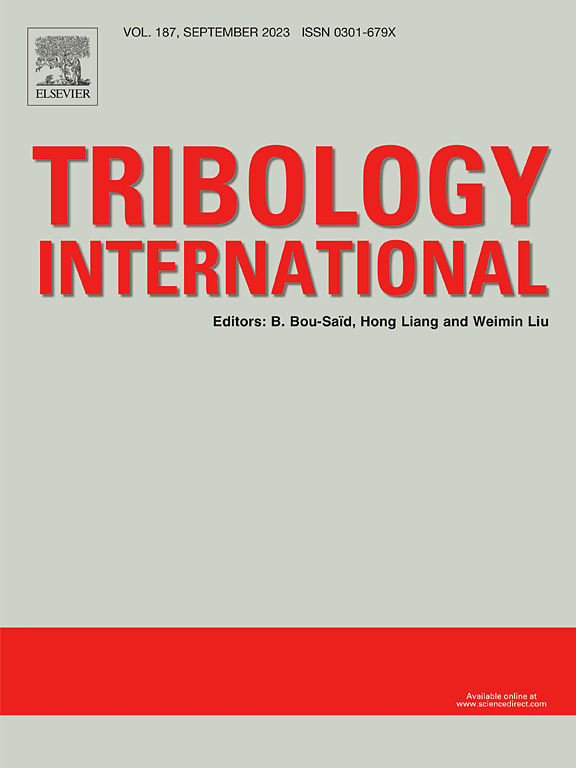Tribology of PTFE in Hydrogen Atmosphere
IF 6.1
1区 工程技术
Q1 ENGINEERING, MECHANICAL
引用次数: 0
Abstract
Hydrogen applications face sealing challenges. Often, these seals are made of PTFE and work under fretting conditions. Experiments in this study were conducted with PTFE against 52100 steel under varying humidity. Results show significant wear of PTFE in hydrogen, regardless of humidity, with PTFE transferring onto steel surfaces. FTIR and XPS analyses reveal that hydrogen's reducing effect suppresses surface metal oxide formation, inhibiting tribochemical reactions. However, when hydrogen is diluted with nitrogen, PTFE's tribological performance improves, though tribochemistry is not promoted. Only with oxygen and water vapour do tribochemical reactions occur in H2, where metal fluoride is first formed, followed by carboxylate chelates. These findings highlight the critical role of hydrogen's reducing nature, offering insights for developing advanced sealing materials.
求助全文
约1分钟内获得全文
求助全文
来源期刊

Tribology International
工程技术-工程:机械
CiteScore
10.10
自引率
16.10%
发文量
627
审稿时长
35 days
期刊介绍:
Tribology is the science of rubbing surfaces and contributes to every facet of our everyday life, from live cell friction to engine lubrication and seismology. As such tribology is truly multidisciplinary and this extraordinary breadth of scientific interest is reflected in the scope of Tribology International.
Tribology International seeks to publish original research papers of the highest scientific quality to provide an archival resource for scientists from all backgrounds. Written contributions are invited reporting experimental and modelling studies both in established areas of tribology and emerging fields. Scientific topics include the physics or chemistry of tribo-surfaces, bio-tribology, surface engineering and materials, contact mechanics, nano-tribology, lubricants and hydrodynamic lubrication.
 求助内容:
求助内容: 应助结果提醒方式:
应助结果提醒方式:


